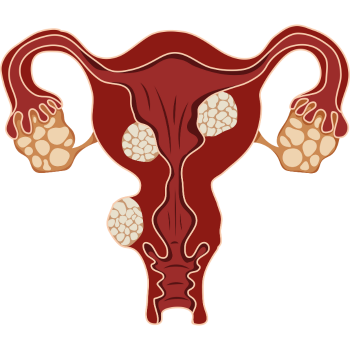by Boluwatife Ogunjumelo, AIWCC Cologne
Uterine fibroids, medically known as leiomyomas, are benign tumours that develop from the smooth muscle tissue of the uterus. These are the most common non-cancerous growths affecting women of reproductive age worldwide, but in Nigeria they have become a significant health issue. With a high prevalence rate, severe symptoms, and challenges in diagnosis and treatment, fibroids have emerged as a public health concern. This article explores the prevalence, risk factors, clinical presentation, treatment options and the challenges faced by Nigerian women in managing this condition. Recent studies suggest that Nigeria has one of the highest rates of uterine fibroids compared to other regions. Research in Nigerian teaching hospitals reveals that fibroids are responsible for a large percentage of gynecological hospital admissions and surgical interventions. Women aged 30 to 39 are most commonly diagnosed, which highlights the role both genetics and environmental factors play in their development. This increased prevalence calls for a greater focus on raising awareness and improving healthcare services that specifically address women’s reproductive health needs.
Recent studies suggest that Nigeria has one of the highest rates of uterine fibroids compared to other regions. Research in Nigerian teaching hospitals reveals that fibroids are responsible for a large percentage of gynecological hospital admissions and surgical interventions. Women aged 30 to 39 are most commonly diagnosed, which highlights the role both genetics and environmental factors play in their development. This increased prevalence calls for a greater focus on raising awareness and improving healthcare services that specifically address women’s reproductive health needs.
Key risk factors for fibroid development include age, with the risk increasing after 30, and nulliparity (the condition of never having given birth). Family history is another significant factor, as women with close relatives who have had fibroids are at higher risk. Furthermore, lifestyle factors such as obesity, high red meat consumption and a low intake of fruits and vegetables have been linked to fibroid development in Nigerian women. Hormonal imbalances, particularly higher estrogen levels, can also promote the growth of fibroids.
The symptoms associated with uterine fibroids vary. While some women may not experience any symptoms, others endure significant discomfort. Common symptoms include heavy menstrual bleeding, which can result in anemia, and persistent pelvic pain. Fibroids can also affect fertility, lead to miscarriages, or cause complications during pregnancy, such as premature labour. In certain cases, large fibroids press against nearby organs, causing urinary frequency or bowel issues. Unfortunately, these symptoms are often misattributed to normal menstrual changes, leading to delays in diagnosis.
Managing uterine fibroids in Nigeria involves multiple strategies, depending on the severity of the symptoms and the patient’s reproductive goals. Women with mild symptoms may only require regular monitoring. For those with more severe symptoms, hormonal treatments can help control bleeding and ease pain. If a woman wishes to retain her fertility, a surgical procedure like myomectomy, which removes the fibroids while preserving the uterus, is typically preferred. In cases where childbearing is no longer a concern or symptoms are severe, a hysterectomy may be suggested. Less invasive treatments, such as laparoscopic surgery and uterine artery embolization, are available but limited by cost and access to specialized care.
Despite the available treatment options, numerous challenges hinder the management of uterine fibroids in Nigeria. Limited access to specialized gynecological care in rural areas, combined with the high cost of advanced treatments, makes it difficult for many women to receive adequate care. Additionally, cultural attitudes and the stigma surrounding gynecological issues often prevent women from seeking help early, leading to worsening symptoms before treatment is pursued.
In recent years, however, efforts to improve the management of fibroids have increased. Public health campaigns are educating women about the symptoms and treatment options, while healthcare institutions are investing in more advanced diagnostic and surgical technologies. Research into the genetic and environmental factors that contribute to fibroid development may lead to more targeted and effective treatments in the future.
In conclusion, uterine fibroids present a major public health challenge in Nigeria, affecting the reproductive health and overall well-being of many women. Addressing this issue requires a multi-faceted approach that includes raising awareness, improving access to care, and increasing investment in research to understand the underlying causes. With continued efforts from healthcare providers, policymakers and community organizations, more effective prevention and treatment strategies can be developed, ultimately improving the quality of life for Nigerian women. Early intervention remains crucial for better outcomes.
Image: Canva
